There have been some tremendous Uruguayan players in Europe recently. Luis Suárez, Edinson Cavani and Diego Forlán have all arrived in Europe and gone onto play for some of the best teams Europe has to offer. Fresh young talent such as Federico Valverde and Rodrigo Benatacur have recently made the jump to European giants in Real Madrid and Juventus, respectively. Surely it would be safe to assume that all the best Uruguayan talents playing in South America have been snapped up at a young age and whisked off to Europe? Enter Giorgian De Arrascaeta. The Flamengo forward had his breakout season in the 2019 Campeonato Brasileiro Série A (Brazilian Série A) campaign, in which he scored 15 goals and assisted his teammates on 11 occasions. De Arrascaeta has attracted attention from Newcastle, Wolves and Celtic in recent times, as well as several other teams across Europe’s top five leagues.
In this tactical analysis. We will produce an in-depth scout report and analysis on the Uruguayan’s game and discover why the Flamengo man is destined for Europe.
Goal-scoring prowess
De Arrascaeta’s ability to find the back of the net should not be underestimated. The Uruguayan was in lethal form in the 2019 season, scoring 15 goals as mentioned earlier. If we look at De Arrascaeta’s shot map for the year, we can see that most of his shots occur inside the penalty area. The location of 13 of his 15 goals coming from shots within the penalty area (the other two being direct free-kicks or penalties).
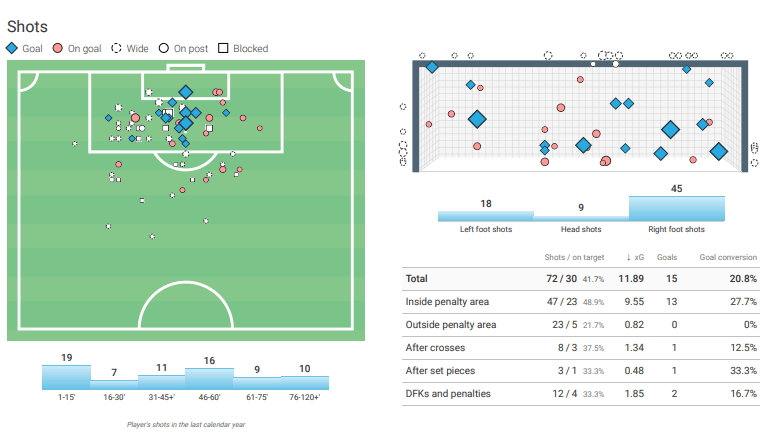
The Uruguay international tends to make late runs from deep into the penalty area and looks to get on the end of cutbacks from his teammates. We can see some examples of this below.
In our first example, we see De Arrascaeta time his run into the area perfectly, enabling him to latch onto the pass from teammate Bruno Henrique and smartly tuck his shot into the bottom corner.
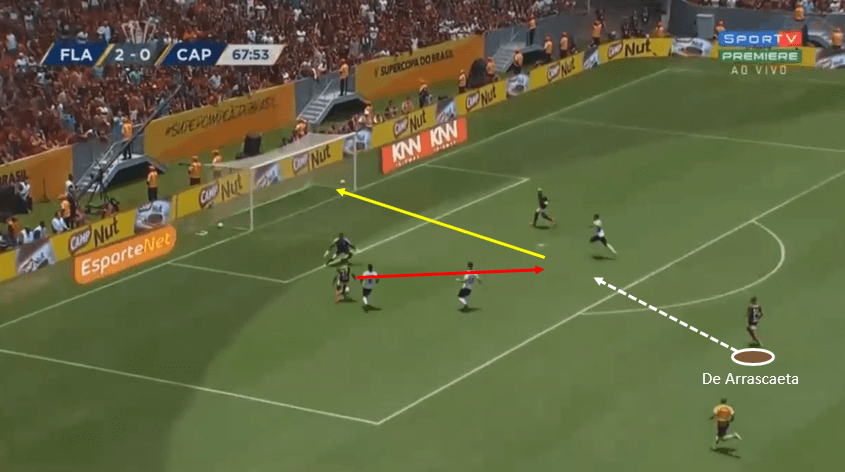
When comparing De Arrascaeta to the rest of Série A, he is a clear stand out in terms of goals per 90, despite only taking around an average number of shots per 90. We can see this as a visual in this scatter graph.
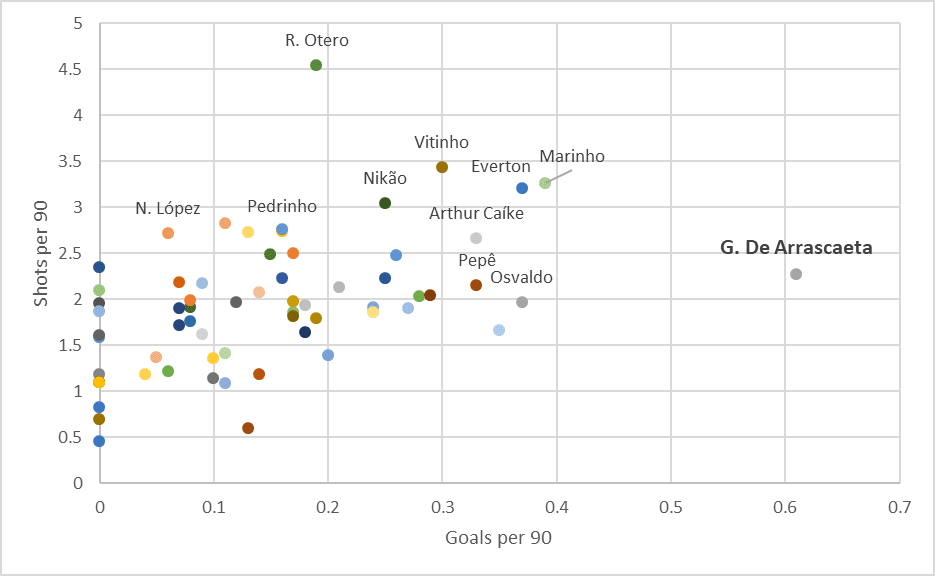
If we now compare him to fellow attacking midfielders and wingers in Europe’s top five leagues, we can see how he compares.
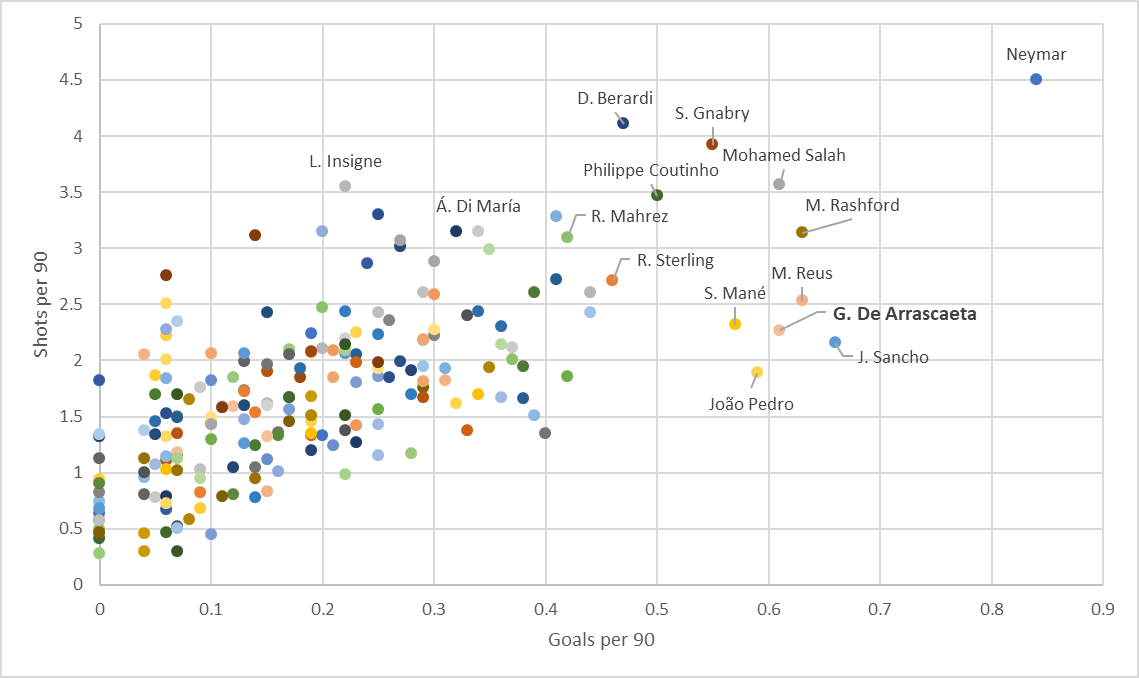
As we can see De Arrascaeta is in esteemed company when being compared to players in Europe’s top five leagues. The Uruguayan posts similar numbers to Liverpool’s Sadio Mané, and Dortmund duo Marco Reus and Jadon Sancho. Whilst the quality of Europe’s top leagues is arguably of a higher standard to that of the Série A, the quality that De Arrascaeta possesses cannot be denied. When it comes to goalscoring he is currently up there with the absolute best in the world.
De Arrascaeta’s knack of finding the back of the net is a crucial component of Flamengo’s attacking threat, his flexibility to play a variety of positions behind the striker is a bonus. He is posting seriously impressive numbers and if he were to make the switch to Europe, there could possibly be a small drop off on his goals as he adapts to his new surroundings.
Playmaking
So far, we have discovered that De Arrascaeta is prolific in front of goal but he’s just as effective when it comes to his creativity and play making efforts. De Arrascaeta led the league in assists in the 2019 season.
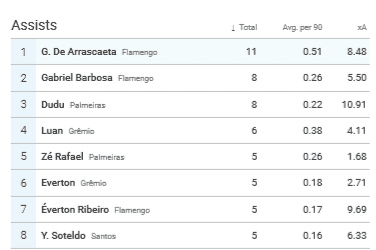
We can see from the assists table that De Arrascaeta creates significantly higher average assists per 90 with 0.51 than the rest of the league. If we compare to Europe’s top five leagues. We can see that, once again, De Arrascaeta posts impressive numbers and is in the top bracket for xA per 90 and key passes per 90.
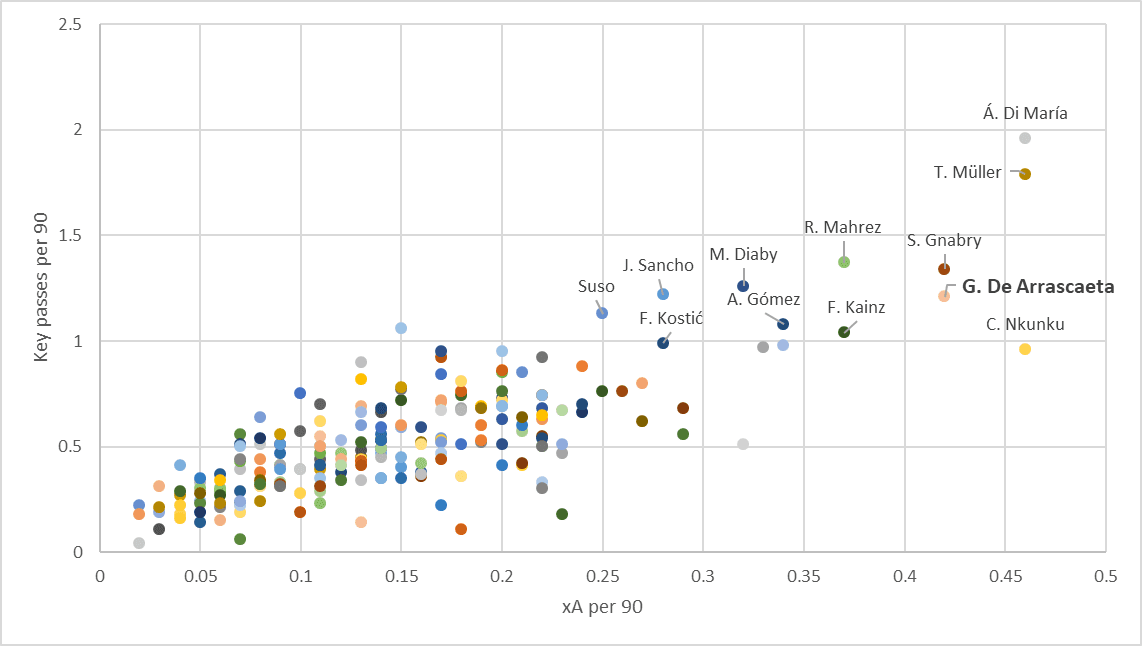
De Arrascaeta is an attacking outlet in terms of scoring goals and laying them on for his teammates. Let us look at an example.
Flamengo work a corner short and De Arrascaeta finds himself in enough space to pick out a teammate and delivers a brilliant cross for him to head home.
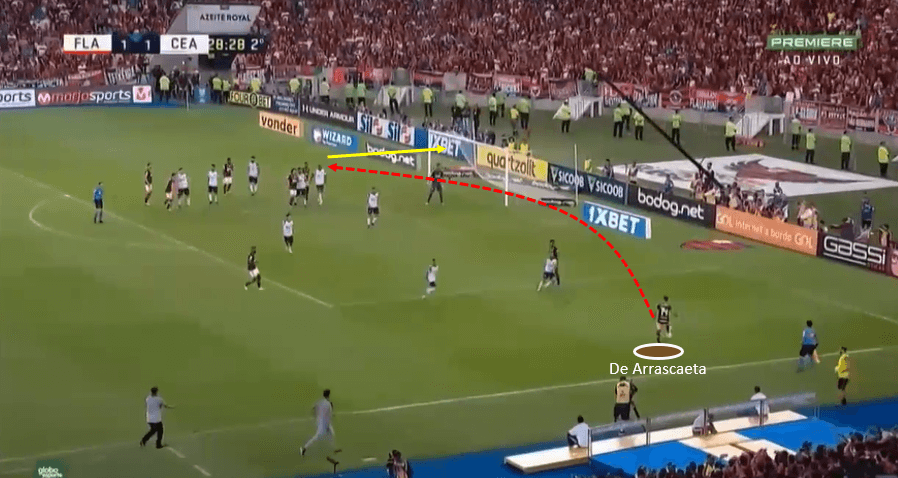
We can see another example of De Arrascaeta’s selflessness here. He could have attempted a difficult shot in an attempt to score himself, yet he has the vision and ability to be able to play a first time through ball into the path of teammate Gabriel Barbosa, who has a much higher chance of scoring. This awareness in high-pressure environments is a key characteristic of De Arrascaeta’s attacking style of play, in both scoring and assisting. He is always looking to create the best possible chance (xG) for his team to score.
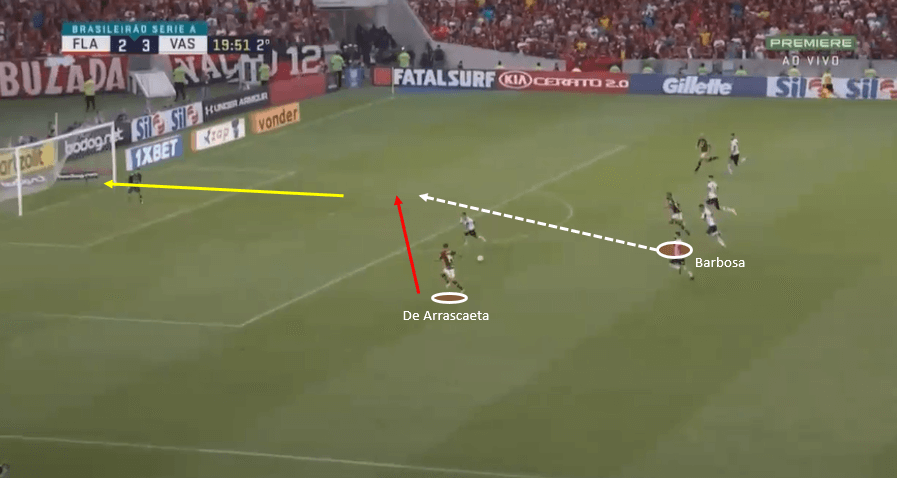
De Arrascaeta’s desire to put the team’s success above any individual accolade is one his greatest attributes, his prime interest is to create the best possible scoring chance for his team.
Dribbling into dangerous positions
De Arrascaeta is probably most known for his magical dribbling ability and his ability to keep the ball under close control whilst dribbling at pace. The following image details his dribbles in the final third. A dribble success rate of 70% in the final third is exceptional. Along with a high success rate, his dribbles have resulted in six goals. Adding another weapon to his already extensive attacking armoury.
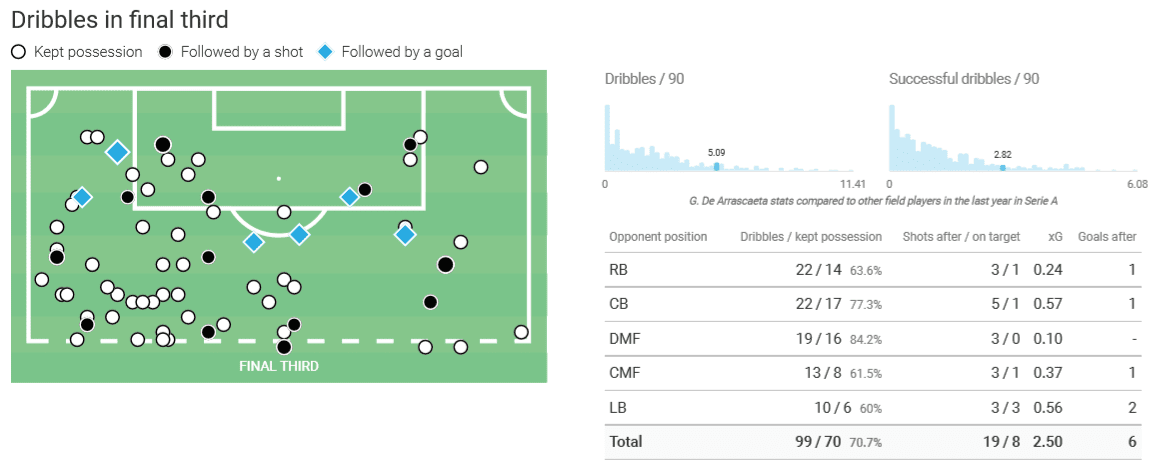
Let us look at an example of De Arrascaeta’s dribbling ability. Here we can see him ‘2v1’ against two Palmeiras defenders. The two defenders close in on De Arrascaeta from opposite directions in an attempt to pressure him off the ball. De Arrascaeta feints to come inside resulting in one of the defenders diving in to attempt a tackle, as soon as the defender commits (shown in yellow) De Arrascaeta swiftly shifts the ball back to the outside and drives past him and leaves both defenders chasing after him as he drives into the penalty area.
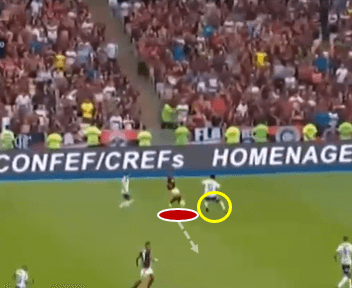
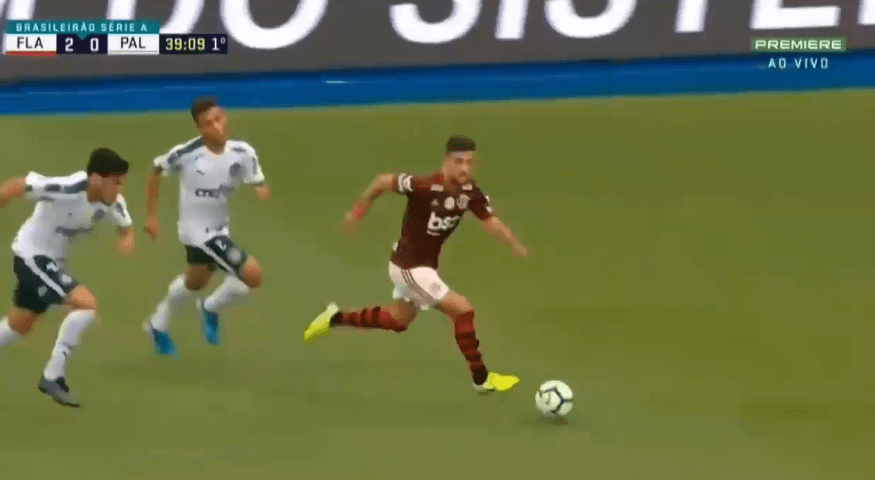
His late runs from deep, his creation of good quality chances for his teammates and his ability to dribble past defenders with ease, all add up to create a player that is incredibly difficult to defend against – as defenders found out in the 2019 season. No other player got double figures for both goals and assists. It is because of De Arrascaeta’s wide range of abilities and traits that enable him to be any of the following: a prolific goal scorer, a creative genius or a devilish dribbler that will make many European teams sit up and take notice.
Aggressive defending
As well as being a formidable attacking player, the Uruguayan is an incredibly aggressive defender. He looks to be proactive in his defending and aims to either read play and intercept passes or to press with intent with a view to dispossessing his opponent.
An aspect of Flamengo’s defensive tactics is to press high in the final third, a tactic that is becoming more common in Europe. De Arrascaeta has the intelligence to know when to press and when to stand off. When looking at the data for wingers and forwards in the league, De Arrascaeta has made the fifth most final third recoveries this season, and the most for Flamengo.
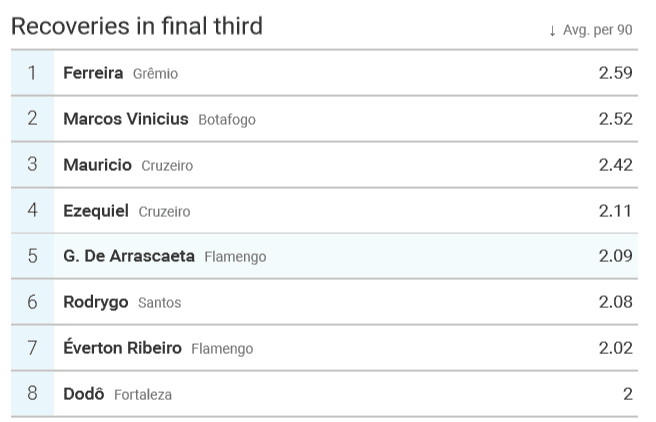
Not only does De Arrascaeta make a lot of recoveries in the final third, many of his recoveries result in shots, as shown in the following image.
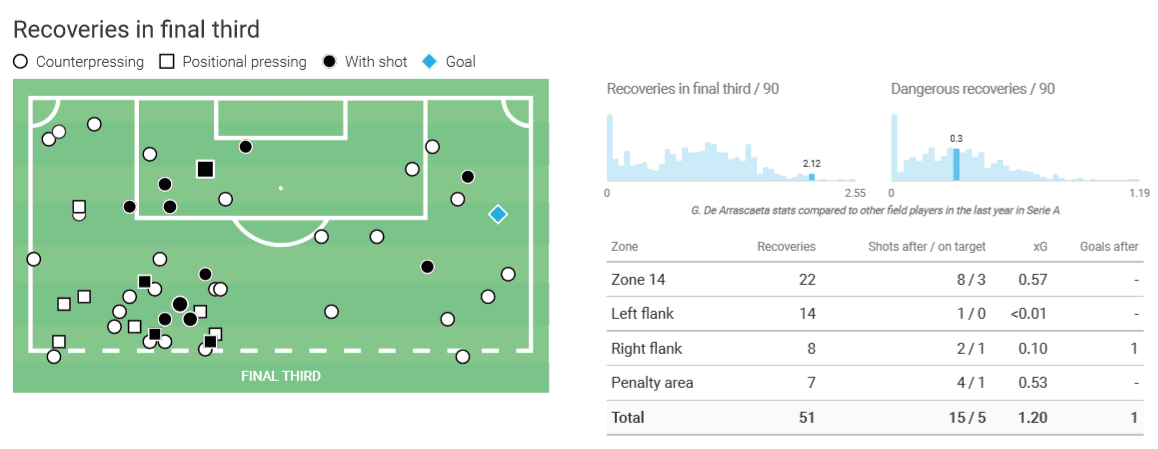
In the following example we can see De Arrascaeta wait for the pass to the full back before launching into an aggressive press, as he presses, he ensures that he creates a passing shadow on the nearest forward passing option. He wins the ball but is fouled before he can break.
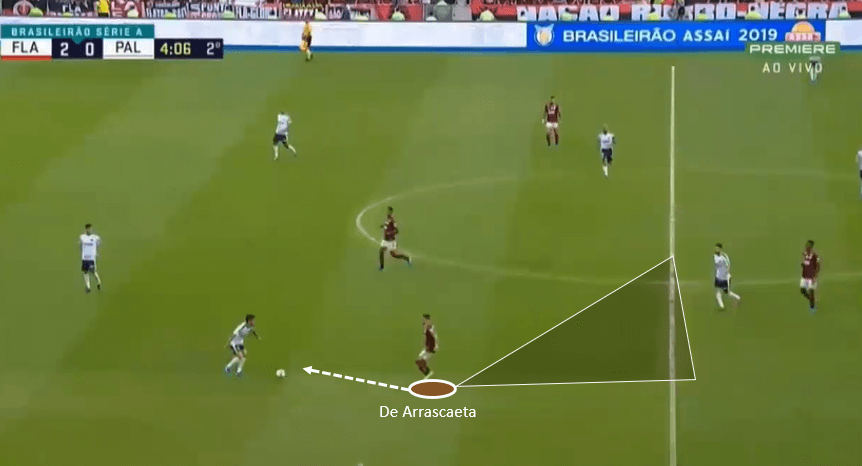
De Arrascaeta’s knowledge of high pressing systems and his ability to successfully recover the ball in the final third along with his attacking output will endear him to European teams who have a similar system to Flamengo.
Physical demands of European football
Despite seemingly having everything possibly needed to earn him a lucrative move to Europe. There are areas that De Arrascaeta must improve upon if he wants to succeed in the more demanding football in Europe.
European football is more intense and much more physical than in Brazil. The image below shows the average PPDA (passes per defensive action) for Flamengo’s opponents in the 2019 season and the top five European leagues for the 2019/20 season up until the curtailment due to Covid-19.
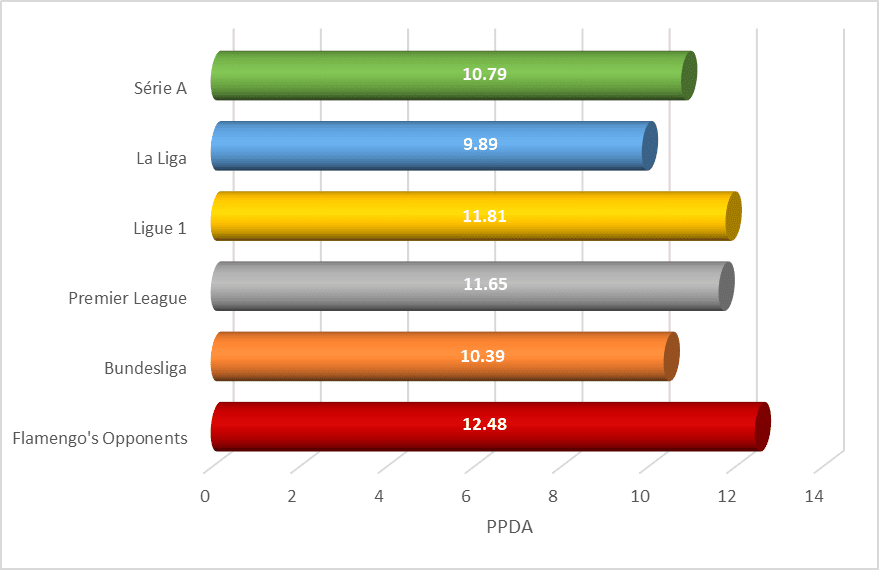
PPDA is defined on Wyscout as ‘Opponent passes per defensive action in opponent’s final 60% of the pitch and is well-studied to qualify pressing intensity’. As we see in the chart above, Flamengo have been allowed an average of 12.48 passes per defensive action, which is the highest out of the data set, with La Liga being the lowest at 9.89. Many of the stereotypical high pressing teams in Europe (Liverpool, Manchester City etc.) have a PPDA of less than eight. De Arrascaeta will have to adapt to the faster paced and more intense football if he were to secure a transfer to Europe.
Error proneness
De Arrascaeta can be a little error prone and can make avoidable mistakes. This is not to say De Arrascaeta does not have the ability and makes errors due to not being capable but simply a lack of concentration and focus. On many occasions, this lack of concentration occurs when De Arrascaeta is receiving with his back to goal. Whether he is simply ‘out-muscled’ by an opponent or something more fundamental such as the Uruguayan not checking his shoulder for defenders before receiving a pass or not protecting the ball correctly by having poor body position. We can see an example of this here.
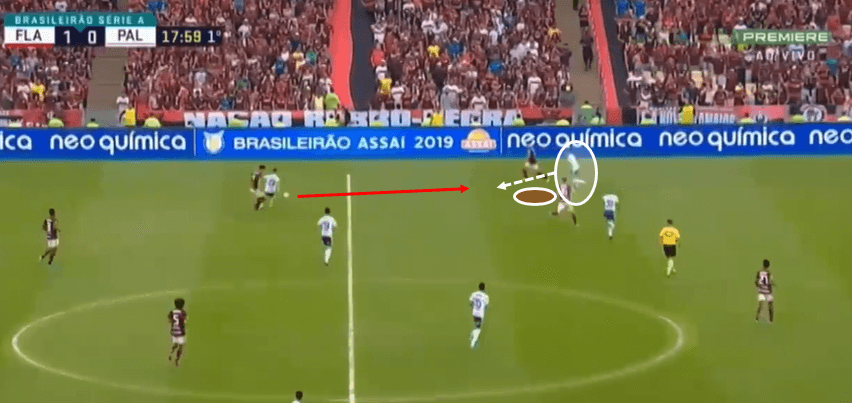
Teammate Filipe Luís plays a ball into De Arrascaeta, as the ball approaches, the Palmeiras defender brushes De Arrascaeta aside and wins possession, setting Palmeiras off on a counterattack. Whether this was due to De Arrascaeta not being aware of the defender’s location or not being strong enough to hold him off. In Europe, this action would be more probable to happen due to the physical nature of football in Europe and particularly England. De Arrascaeta will need to keep his focus 100% of the time or it will be punished in the higher quality leagues.
Aerial vulnerability
Although being dominant in the air is not a key attribute of wingers, it would be of huge benefit to De Arrascaeta if he were to improve in this area. Out of wingers and forwards in Europe’s top five leagues, he ranks in 157th for aerial duels won (%) with 35.18%, when we factor in that he is well into the lower half for aerials duels per 90, with only 1.56 aerial duels per 90. It becomes clear that he contests a low number of aerial duels and is successful in just over a third of them. The likelihood of De Arrascaeta having to contest more aerial duels in Europe opposed to Brazil is most probable, and he will need to improve in order to compete in Europe.
Conclusion
Giorgian De Arrascaeta is without doubt one of the most creative and attacking players currently plying their trade in South America. The fact he is 25 and has not moved to Europe yet is a shock. In the 2019 season, he had his most prolific season in both goals and assists. Recent rumours linking him to England and France may resurface in the summer transfer window, although the Covid-19 pandemic may alter many teams transfer plans for the foreseeable future. When football is back to normal and clubs are looking for the next diamond in the rough hiding away in South America, you can bet Giorgian De Arrascaeta will be raising a few eyebrows. Is he destined for Europe? I think so.

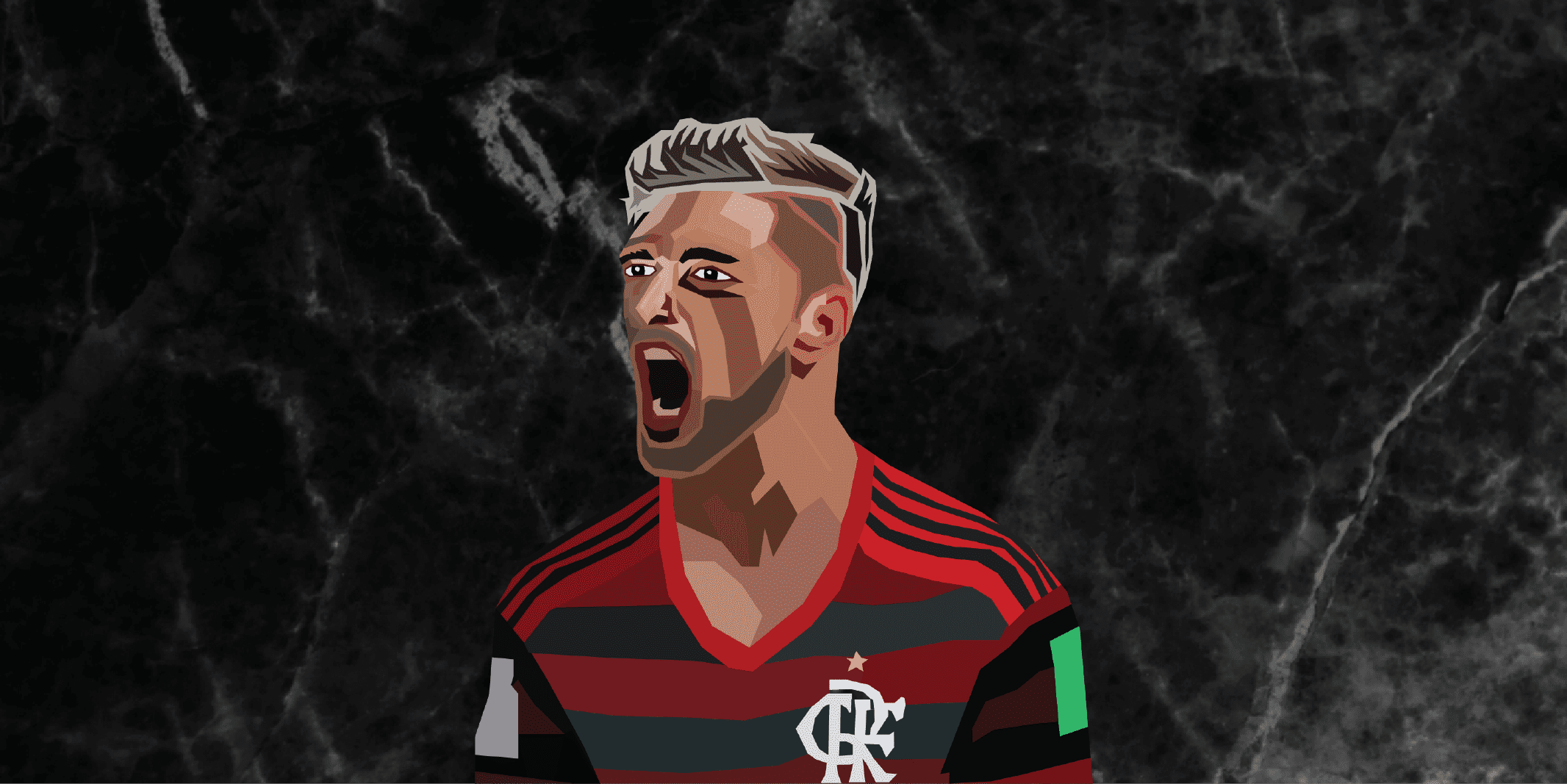



Comments